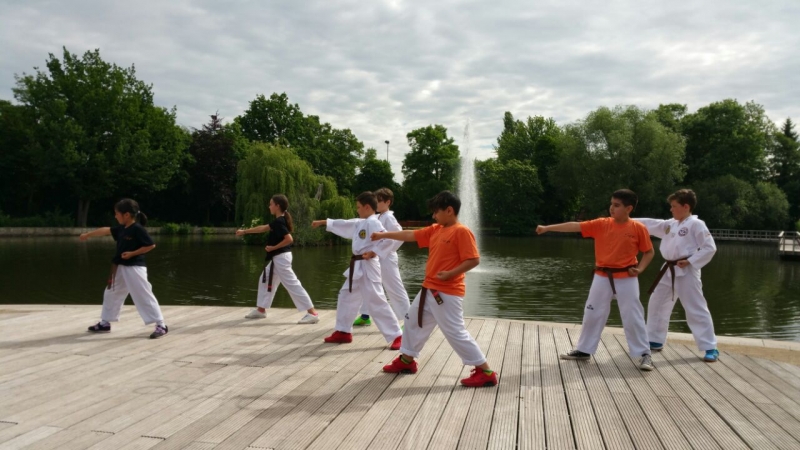Subscribe
Subscribe to our quarterly email newsletter 「ICM News」 to receive recent news about ICM, diverse writings by experts and youth, and relevant information.
Title [Martial Arts Globe] Toward a “healthy” society: strengthening social cohesion through martial arts practice?

Toward a “healthy” society: strengthening social cohesion through martial arts practice? Martin Minarik
It is May 2023 and the WHO has now officially declared an end to the worldwide health emergency due to the Corona-pandemic (UN News, 2023). Although studies regarding the long-term societal impact of COVID-19 are yet to be published, experts from fields such as education repeatedly stressed that social competencies among children and youth have decreased after rigorous distancing measures of anti-COVID-policies. During the pandemic, a rising intensity in the medial discourse on Corona-policy was also observable and it seems that the roughness of the societal discourse on topics, such as climate, identity, gender, and others has subsequently increased, too. All those points are mere observations from a more or less subjective European perspective and the reader might agree, or disagree with those statements. The main point that the pandemic showed us, however, might be, that social cohesion is something that has not only to do with stable governments, or relative financial stability of people, families or communities, but that the main aspect of social cohesion lies in functioning social relationships between individuals; and social relationships are not something that you “have” or “not have” in the first place, but something that you “do”. This “doing” requires competencies to be accomplished, which can be trained and improved. This is, where sports, physical education and martial arts come in. But before addressing ways in which sports and martial arts might help to “train” social cohesion, it is necessary to briefly outline how social cohesion can be conceptualized according to different features or “skills”. How to conceptualize social cohesion? Social cohesion is a concept with no single definition and a “lack of concensus”, as Schiefer et al. point out (2016: 579). According to Szreter and Woolcock (2003) a predominantly relational concept of social cohesion comprises bonding, bridging, and linking-qualities. While bonding describes a cohesive relationship between individuals on a basis of shared beliefs, values and identities, bridging then describes a cohesive relationship between individuals and groups that do not share common beliefs, values and identities, but nevertheless share mutual respect and acknowledgement. Linking finally describes a functioning relationship between individuals and institutions or representatives. Combined with the Social Cohesion Index (SCI) established by Langer et al. (2016) it is then possible to characterize bonding, bridging, and linking qualities along the factors “trust”, “(in)equality”, and “identity” (ibid.). How to “train” social cohesion in sports and martial arts? Being a frame for focused human interaction by evoking a great variety of strong emotions and meanings, sports and especially martial arts practice offer a space for social experience and learning. Especially social skills needed for bonding and bridging-competencies can be developed through sports and martial arts training. But how is that and why is this the case with martial arts practice in particular? Many of those systems which we call “traditional martial arts” consist, among others, of forms-practice and sparring-practice. As previously argued, those two types of practices offer exceptional possibilities for embodied experiences with regard to skills that can be related to bonding and bridging-capacities (Minarik 2023). Bonding and bridging in martial arts practice Forms are usually choreographed sequences of offensive and defensive maneuvers. They can be practiced in different ways, as solo-routines or as group- or even mass-performances. Performed in a solo-manner, they offer a great possibility for experiences of flow (Csíkszentmihályi 1990). Performed in a group, they offer the possibility of collective flow-emergence, that may lead to shared experiences of what Victor Turner calls communitas (1982), or bodily, and pre-reflexive co-experience of unity and belonging. By that, forms-practice provides a learning-environment for bonding by enabling equality and trust, and collective identity to be embodied through the shared experience of communitas (Minarik 2023). Sparring can be defined as a consensual, non-competitive form of fighting. In sparring, winning is not the primal goal, but learning. Sparring is not to be viewed as violence, but instead as a practice of social regulation of violence (O'Shea 2019). This is possible, as O’Shea argues, because in sparring forms of violence – punches, kicks, etc. – are deprived of their violent meaning and transformed into means of communication. Emotions such as aggression and fear can be experienced in a controlled way and be potentially transformed, as well. Thus, sparring does not become a format of violence but of disagreement, and at the same time offers a learning context in which the respectful handling of disagreement can be habitualized (ibid.). As a playful, rule-based and process-oriented type of fighting, sparring enables learning experiences for dealing with inequality and feeling trust and respect in embodied disagreements. In terms of identity, sparring can offer a practical framing for strengthening self-confidence, empowerment and thus also confidence in one's own identity. At the same time, it can show that an identity that is perceived as threatening or even contradictory can be recognized in its legitimacy and that opposing convictions can be negotiated in a respectful and rule-guided dialogue (Minarik 2023). By building martial arts training around these types of practices, it is possible to provide training that not only increases the quality of life of individuals, but also contributes to cohesive societies. Literature
|
















